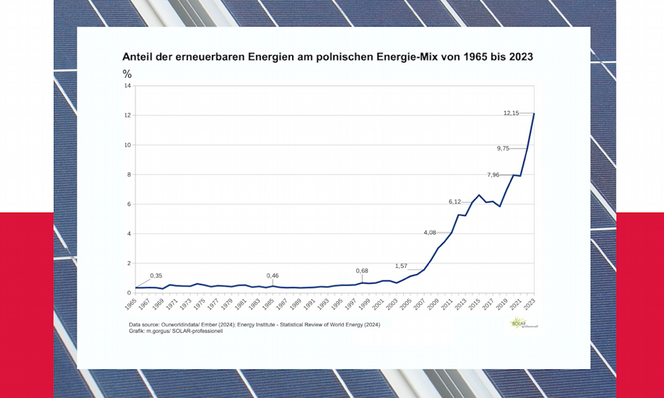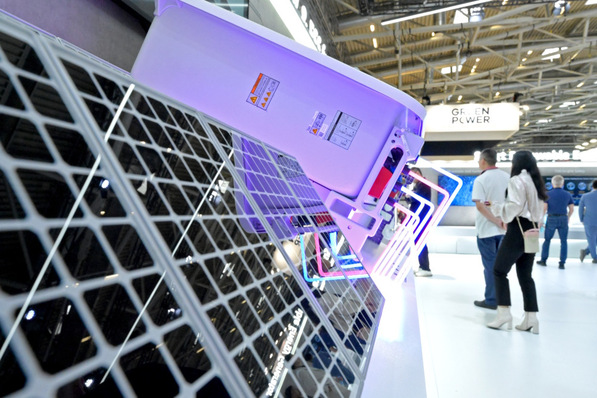Across the the globe, the energy industry is being revolutionized. Photovoltaics plays a major role: According to a forecast by the International Energy Agency (IEA), it is poised to surpass natural gas by 2026 and coal by 2027 as the major source of electricity. But storage, electromobility and integrated energy solutions are also decisive for a successful transition to a sustainable energy industry. Tomorrow’s energy world will depend on visionary companies, technological innovations and fresh ideas and concepts. The best and most innovative developments from these areas have been nominated for The smarter E AWARD 2023. The winners will receive their awards on the evening of June 13, one day before the The smarter E Europe exhibition starts. Europe’s largest platform for the energy industry and its four parallel exhibitions Intersolar Europe, ees Europe, Power2Drive Europe and EM-Power Europe will take place from June 14–16 at Messe München.
Did you miss that? PV Guided Tours Videos viewed more than one million times
Intelligent, innovative, interdisciplinary – as Europe’s largest energy industry platform, The smarter E Europe, will be shedding light on the key topics of the new energy world. Throughout the event, the focus will be on solar energy, storage technology, energy management and e-mobility. In 2018, The smarter E AWARD was introduced to honor cross-industry projects. The innovation prize recognizes companies and their products that help shape tomorrow’s energy supply. The smarter E AWARD will be presented for noteworthy achievements and innovations in the category Outstanding Projects with a ceremonyin room 1 at the International Congress Center München (ICM) on June 13 at 6 pm. The Intersolar AWARD and the ees AWARD, as well as the Power2Drive AWARD and the EM-Power AWARD, which will be bestowed for the first time, will also be awarded at the ceremony.
The finalists for The smarter E AWARD 2023:
Fenecon (Germany): A Powerful Energy Storage System for Electric PostAuto in Brugg (Switzerland)
The town of Brugg, Switzerland, uses a modular storage container in combination with a photovoltaic installation at their main bus station to provide a low-carbon power supply for one of the bus lines. The compact ten-foot container holds batteries with a capacity of 352 kilowatts (kW) and a capacity of 328 kilowatt hours (kWh). The open source energy management system ensures that 100% of the electricity produced by the photovoltaic installation on the roof of the bus station is used to power the buses. The holistic energy concept of the first charging station for electric buses in Switzerland guarantees that the required charging power is always available, while also reducing the load on the power grid. The additional charging station allows for small vehicle batteries to be integrated, which saves money and resources. The storage system can be expanded to a capacity of up to 600 kWh and an output of up to 700 kW if needed.
Fluence (USA): Luna and LAB Battery Storage Facilities
In Lancaster, CA, a complex made of two battery storage systems provides grid support during periods of high demand, and reduces blackouts. The batteries are also used for frequency regulation and integration of renewable energies, and in case of a power grid failure, they serve as backup. However, the core business model is the management in the energy arbitrage market. Due to the volatility of electricity prices at the energy exchange, battery storage projects are becoming so attractive that they can now finance themselves. This is made possible primarily by software-based smart bidding, i.e. the marketing of the storage on the electricity market. The system comprises the first project, the “Lancaster Area Battery” (LAB) with 508 MWh and 127 MW and Luna, a standalone storage project that was deployed at a later point with 400 MWh and 100 MW. In total, the project has a storage capacity of 908 MWh and an output of 227 MW, which makes it one of the largest energy storage complexes in the world.
HPS Home Power Solutions (Germany): multi-picea – Independent Commercial Property
A photovoltaic installation combined with a hydrogen energy storage system provides zero-carbon electricity and heat to a commercial property in Meckenheim near Bonn, Germany. The storage device is charged with excess power from a photovoltaic installation with 98 kilowatt-peak (kWp) located on the roof and façade of the building. Renewable energy makes the building fully independent. The heat produced during the conversion of hydrogen is utilized by two heat pumps. They are driven by the reconverted energy, which is stored as hydrogen in cylinder gas packs during summer. Although this type of long-term storage requires a major investment making it financially not viable, as a showcase project it demonstrates and makes accessible to a large customer base what is possible using current technologies. This system is cascadable.
Maschinenfabrik Reinhausen (Germany): FlexNet-EkO
This research project based in Bobritzsch-Hilbbersdorf, Germany, focusses on the development of technologies that can help integrate the growing share of renewable energies into the local grids and prepare the grids for the future through optimized operation. Concepts such as these reduce the need to expand medium and high-voltage grids because local grids can be used for solar power feed-in and charging electric vehicles. In addition, it eliminates the costs for the supply of reactive power. This kind of operation improves the quality of the current (stable voltage and frequency, no disruptions) and makes for a longer service life of devices connected to the grid. In a concrete example, the local grids are not supplied via transformers as usual, but are decoupled via a frequency changer, which makes it possible to use frequencies other than the standard ones in certain parts of the grid to supply certain consumers or groups of consumers separately.
(Re)Energisa (Brasil): Vila Restauração Amazon Microgrid: Clean and Reliable Energy for All
In this Brazilian project, one village’s fossil power supply was replaced by renewable energies. The electricity is now available 24/7 to 200 families at a low cost, unlike the previous supply, which came from standard combustion generators that ran for three hours per day. In its stead is a hybrid system consisting of photovoltaics (325 kWp) and a lithium storage system (829 kWh), in addition to two generators with 116 kilovolt-amperes (kVA). These generators run on biofuel derived from locally produced palm oil and are primarily used as backup power supply. Once the charge status of the battery is too low, they start up automatically. Billing is managed via a digital payment system that includes a limit for the energy consumption, giving this project a social aspect. To ensure a long-term, sustainable supply, each household has a consumption limit of 80 kWh per month. The smart meter remotely disconnects consumers who exceed this limit.
Sungrow Floating PV (China): EGAT Sirindhorn Dam Floating Solar Hybrid Project
A 58.8 megawatt peak (MWp) floating PV system was constructed on the reservoir at Sirindhorn Dam in Thailand. The floating solar installation is the largest of its kind and made up of seven sets, each of which has an output of 8.4 MWp. It consists of 144,420 photovoltaic modules in total. The PV system communicates with the local hydropower plant through an integrated energy concept. The energy management system adjusts the two power sources to the fluctuating demand, ensuring that electricity is continuously produced, regardless of the irradiation level. With its annual capacity of around 55 million kWh, the hybrid power plant reduces carbon emissions by about 47,000 tons per year.
Wallbox Charger (Spain): Sirius by Wallbox
A stationary storage device with 23 Nissan LEAF batteries was added to the company fleet of Wallbox’s head office in Barcelona, which are connected via bidirectional wallboxes. What’s more, the stationary storage device with an output of 250 kW and a capacity of 560 kWh is supplied by the 156 kWp photovoltaic installation. The solar energy is primarily used during off-peak hours to charge electric vehicles and stationary batteries. The concept was implemented after the company expanded its head office by 11,000 square meters and 650 workstations, which made the 173 kW grid connection insufficient. The costs for upgrading the grid infrastructure would have been considerably higher. This solution ultimately reduced the dependency on the power grid by 50 percent, while the self-consumption rate increased by 50 percent. The smart energy management system with flexible consumption, also referred to as load shifting, avoids purchasing electricity at times when the energy prices is high.
Further information on the awards can be found at:
www.TheSmarterE-award.com
www.intersolar-award.com
www.ees-award.com
www.powertodrive-award.com
www.em-power-award.com (hcn)








